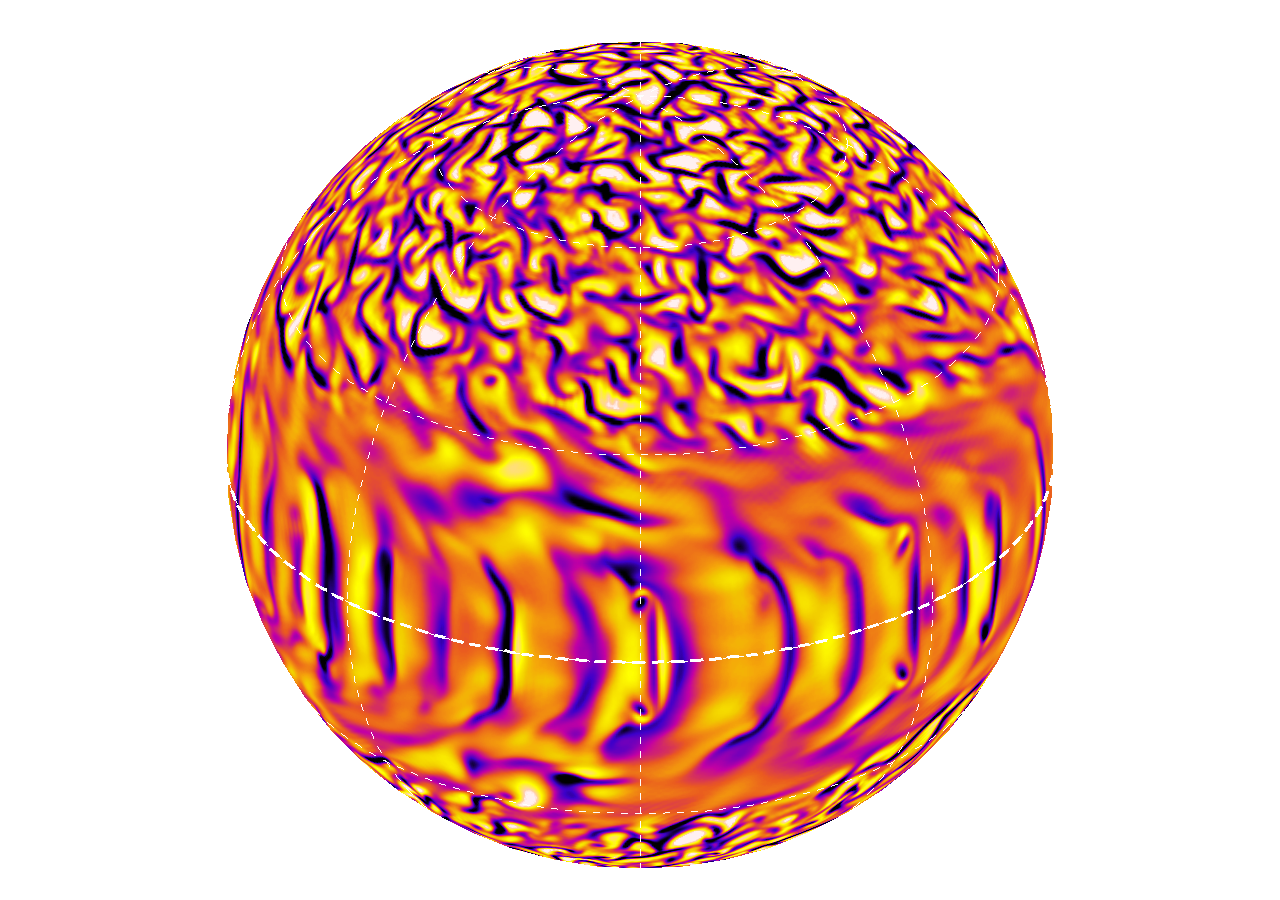|
Modelling Stellar InteriorsMy research at JILA, at the University of Colorado, Boulder, primarily concerns convection in stellar interiors and the resulting magnetic fields which are built there by dynamo action. I'm interested in the nature of our own Sun's magnetic field and its cycles of magnetic activity as well as the nature of these processes in other stars. I've become particularly interested in the effects of rotation on global scales of convection, exploring in some detail the flows and magnetic fields established in more rapidly rotating systems (like our Sun was in its past) and systems where rotation is weak and slow compared to convection (as our Sun will be in the future, as it continues its gradual spindown). In the more rapidly rotating sytems, we've found striking patterns of localized convection, where convective plumes are much stronger in a very limited range of longitude in the equatorial region. These confined states of convection still maintain vigorous global scale flows of differential rotation and may have implications for observed confined structures in our Sun such as active magnetic longitudes. The more rapidly rotating systems also show remarkable dynamo properties, building with apparent ease large, coherrent magnetic flux structures which have been extremely difficult to reproduce in our simulations spinning at the current solar rotation rate. Details on both phenomena will be available in shortly forthcoming papers. Our primary tool for exploring stellar convection at the Laboratory for Computational Dynamics (LCD) is the Anelastic Spherical Harmonic (ASH) code; this code employs pseudo-spectral techniques to model MHD convection within a rotating spherical shell, capturing the spherical geometry and large-scale effects which we believe are critical to the establishment of global scale flows in these stellar interiors. ASH is a Large Eddy Simulation, where the global scales are explicitly resolved and SubGrid Scale modelling is used to capture scales smaller than our grid resolution. In complex systems like our Sun, this is a necessary compromise, as the range of length and time scales present in the real star vastly exceeds our current and future computational resources.
I am very interested in how our Sun continually builds and
rebuilds its global scale fields through dynamo processes. This
global scale dynamo likely has important roots in the large scale
convection of the solar convection zone, in the differential
rotation established there and in the two layers of radial shear
observed by helioseismology in the solar interior: the
near-surface shear layer just beneath the solar photosphere, and
the tachocline at the base of the convection zone. It is curious
that the Sun is able to build organized torroidal fields as well,
which somehow survive within the intense turbulence of the solar
convection to emerge at the surface as sunspots. Ultimately,
solar magnetic activity has an increasing impact on our
technological society. As such, understanding the nature, origin
and evolution of the solar magnetic fields is of great importance.
 |